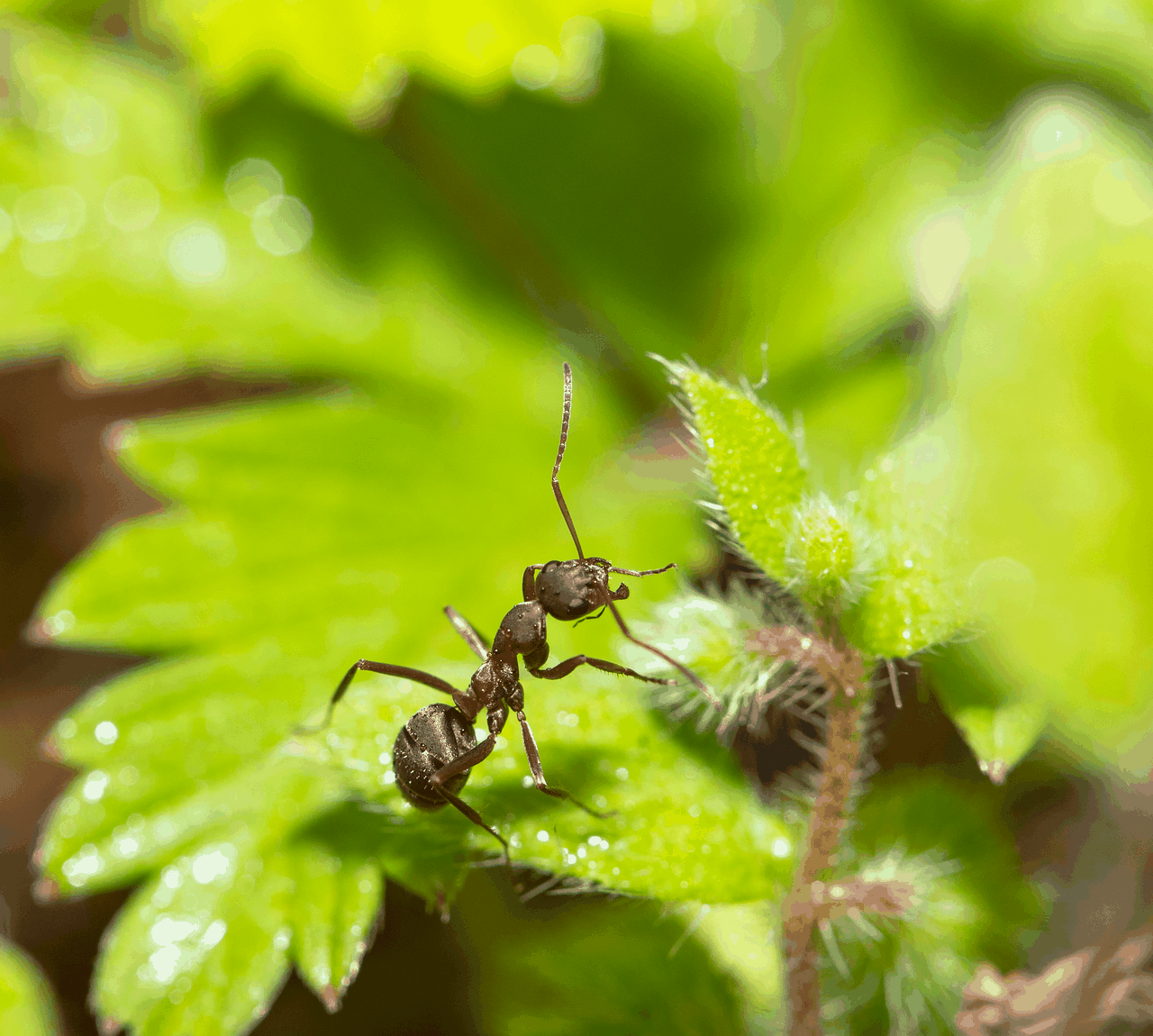
Those tiny, industrious ants marching across your favorite houseplant can be a real buzzkill. But don’t despair! Evicting these unwanted guests from your potted plants is easier than you think. This guide will equip you with a range of effective strategies, from natural repellents to targeted treatments, to help you reclaim your indoor oasis.
This post may have affiliate links. This means that sometimes when you click a link on our site and make a purchase on Amazon, we may earn a small commission at no additional cost to you. We only recommend products we truly believe in, and your support helps keep us running!
Understanding the Allure: Why Ants Love Your Plants?
Before we strategize eviction, let’s understand the appeal of your potted plants to these six-legged visitors. Here are the usual culprits:
- Moisture Mishap: Overwatering creates a damp environment, perfect for ant colonies seeking a new home.
- Aphid Appetizers: If your plant is infested with aphids, these tiny sap-sucking insects produce a sugary substance called honeydew, which ants find irresistible.
- Sweet Treats: Leaving crumbs, spills, or sugary residues near your plants can attract ants in search of a tasty snack.
Step 1: Assess the Situation
Before jumping to conclusions, a little detective work goes a long way. Here’s what to consider:
- Identify the Ant Invaders: Different ant species have varying preferences. Knowing the type can help tailor your approach.
- Scout for Nests: Look for ant trails leading in and out of the soil or cracks in the pot. This might indicate a hidden nest.
- Inspect for Aphids: Check the undersides of leaves and new growth for clusters of tiny, soft-bodied insects – a sign of an aphid infestation.
Once you’ve assessed the situation, you can select the most effective strategy for your specific ant problem.
Eviction Options: From Gentle Persuasion to Targeted Take-Down
Here’s your arsenal for reclaiming your plant haven:
Natural Repellents:
- Scent Blockers: Ants detest certain strong smells. Try sprinkling cinnamon, cayenne pepper, or citrus peels around the base of the pot.
- Soapy Shield: Mix a few drops of dish soap with water and spray lightly around the pot and soil surface. Be careful not to drench the plant.
Taking Aim at the Food Source:
- Aphid Annihilation: If aphids are the root cause, treat your plant with insecticidal soap or neem oil to eliminate them and their sugary bounty.
- Cleanliness is Key: Regularly wipe down surfaces around the plant and clean up spills to remove potential ant attractants.
Direct Ant Discouragement:
- Diatomaceous Earth: This powder, made from fossilized algae, dehydrates ants on contact. Sprinkle a thin layer around the pot (avoid direct contact with the plant) but be aware it can irritate respiratory systems, so wear a mask when applying.
- Coffee Grounds: The strong aroma of used coffee grounds can deter ants. Mix them into the top layer of soil or sprinkle them around the pot. Bonus: coffee grounds add nitrogen to the soil!
For Persistent Pests:
- Ant Bait Traps: Set traps specifically designed for indoor use near the base of the pot or along ant trails. These traps lure ants with a sweet bait containing poison that they carry back to the colony, eliminating the queen and the entire population.
- Insecticidal Sprays: As a last resort, consider using an insecticidal spray labeled safe for houseplants. Always follow the instructions carefully and avoid over-spraying.
Remember: When using any sprays or powders, prioritize the safety of yourself, pets, and children. Read labels carefully and wear gloves when necessary.
Prevention is Key: Keeping Your Plants Ant-Free
Once you’ve successfully evicted your unwelcome guests, here are some tips to prevent a future ant invasion:
- Watering Wisdom: Water your plants deeply but less frequently, allowing the soil to dry slightly between waterings.
- Drainage Matters: Ensure your pots have drainage holes to prevent waterlogging.
- Pot Up with Fresh Mix: Consider repotting your plant with fresh potting mix, especially if you suspect a hidden ant nest in the old soil.
- Regular Monitoring: Keep an eye out for ant trails or signs of aphids and take action promptly to prevent an infestation.
Implementing these simple strategies, you can keep your potted plants a thriving haven for beautiful greenery, not unwelcome tiny tenants. Now go forth, reclaim your plant paradise, and enjoy the company of your leafy friends, pest-free!
